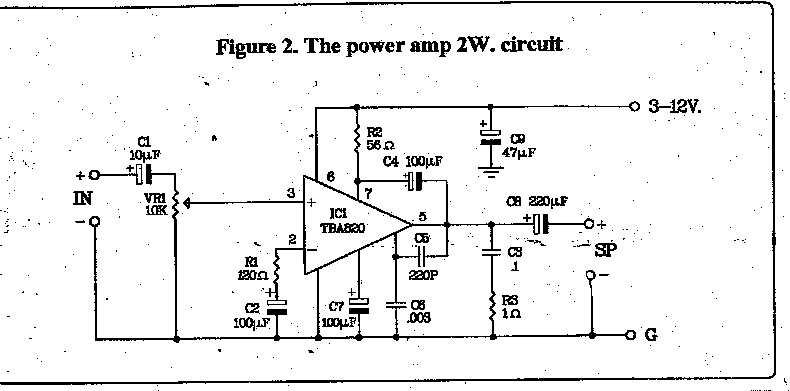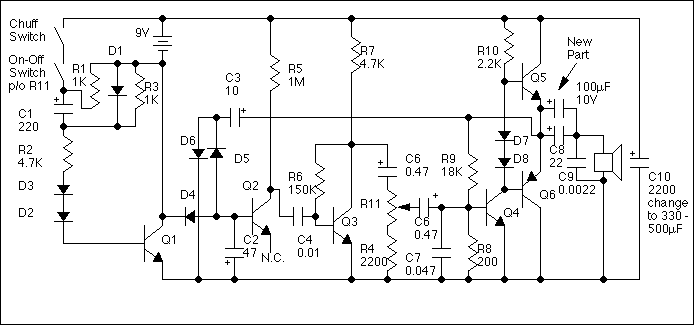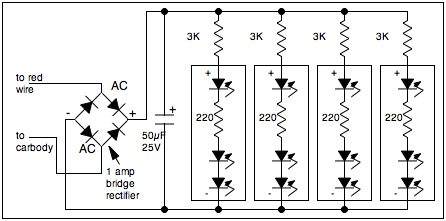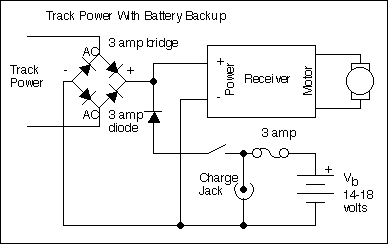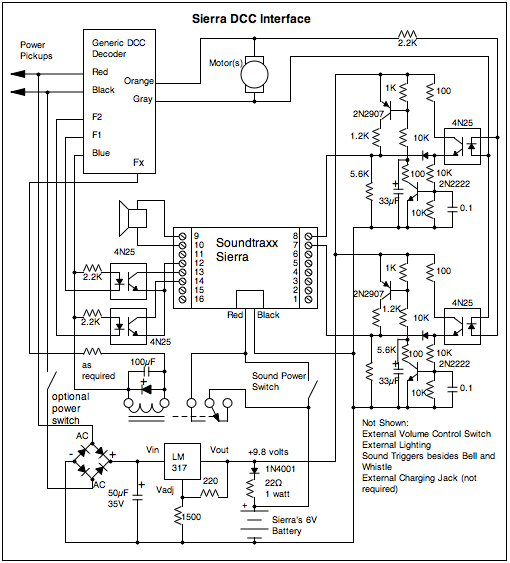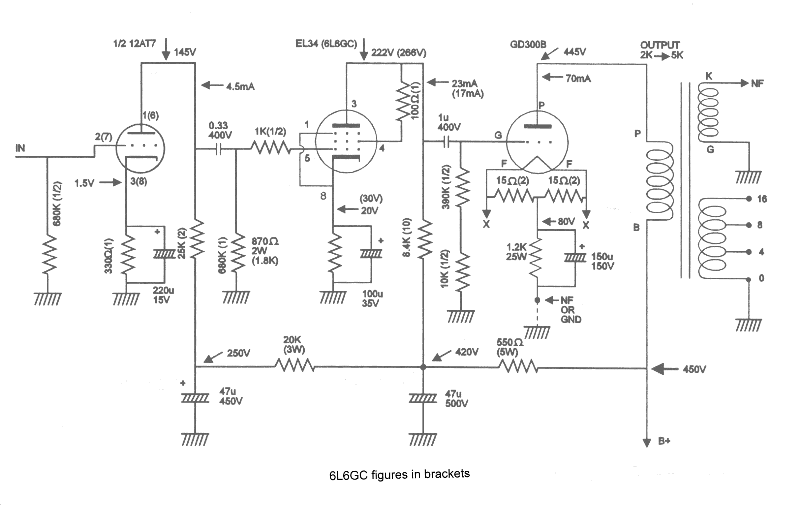
Aristo SD45 Tips

The EMD SD45 was manufactured starting in 1965, representing one of the newest prototypes available in large scale. SD45 locomotives continue to operate across the country, though their numbers are dwindling due to high mileage accrued over the past 30 to 35 years. The SD45 was the first locomotive to utilize an engine with more than 16 cylinders. The 645 model engine in the SD45 featured 20 cylinders, with the "645" in the model number indicating the engine's displacement in inches per cylinder. This two-stroke engine produced 3,600 horsepower, the largest on rails at the time of its manufacture. The heat generated by the engine necessitated additional radiator area, resulting in flares at the rear of the long hood. Cooling air was drawn in through side vents and exhausted out the top, a technique later adopted by other manufacturers to accommodate larger radiators.
There are two major variants of the SD45: the SD45-2 and the SD45T-2. These variants featured entirely new electrical systems and controls, riding on an extended frame and lacking the sloped air intakes. The radiator was extended with a longer hood. The SD45-2 had air intakes located along the top of the hood, while the SD45T-2, known as the tunnel motor, took in air through vents on the sides positioned near the walkways. This design allowed for a clear line of sight through the locomotive, facilitating improved airflow. Developed by Southern Pacific, this arrangement enabled the engines to draw cooler air in tunnels, reducing the risk of overheating and shutdowns caused by superheated air from lead units.
The SD40 and SD40T-2 shared the same frame and cooling arrangement as the SD45 but were equipped with a 16-cylinder model 645 engine producing 3,000 horsepower. Over time, the higher maintenance costs associated with the SD45 led railroads to favor the purchase of SD40s over SD45s. The SD45 is heavily weighted, with a stock weight of 18 lbs, providing significant pulling power. A long steel channel runs the length of the frame, and three lead weights are housed within the fuel tank. These weights can be removed if desired, allowing for the installation of a large battery pack. The engine is shipped without handrails, which must be installed by the user. Once installed, the handrails prevent the locomotive from fitting back into its shipping box.
The locomotive features a new smoke unit that performs effectively at low speeds, and the lighting is of constant intensity. Battery/MU connectors are located at each end of the locomotive; however, an adaptor connector (not supplied) is required to connect two units together. Internally, there is a socket designed for a DCC decoder, though no compatible decoder or R/C receiver currently exists on the market. Initially, the engine produced noticeable gear noise, which diminished during the break-in period. All twelve wheels are designed to pick up power without traction tires, and the heavy weight of the locomotive enhances its performance on dirty tracks, allowing the wheels to maintain contact effectively.
The EMD SD45 and its variants represent significant advancements in locomotive design and engineering, particularly in terms of power generation and thermal management. The integration of features such as the tunnel motor design and enhanced cooling systems reflects the evolving needs of rail operations, particularly in challenging environments like tunnels. The locomotive’s robust construction and thoughtful design choices contribute to its operational longevity and effectiveness in various rail applications.The EMD SD45 was manufactured starting in 1965 so that it represents one of the newest prototypes available in Large Scale. SD45`s are still running all over the country, but they are getting fewer over time due to very high miles in the last 30 to 35 years.
The SD-45 was the first locomotive that used an engine with more than 16 cylinders. The 64 5 model engine in the SD45 carried 20 cylinders. The "645" in the model number indicated the displacement in inches of the engine PER cylinder. This 2 stroke engine developed 3600 horsepower, the largest on rails at the time it was manufactured. The heat generated by the engine was so great that extra radiator area was needed. The wider radiator resulted in the flares on the rear of the long hood. Cooling air was taken in through the side vents and exhausted out the top. This technique was borrowed by other builders later to accommodate larger radiators. There are two major variants of the SD45, the SD45-2 and the SD45T-2. The variants had all new electricals and controls. Both rode on an extended frame and lacked the sloped air intakes. The radiator was extended in a longer hood. The SD45-2 had its air intakes along the top of the hood. The SD45T-2 (tunnel motor) took in air through vents on the sides set down near the walkways. There was nothing inside the hoods in this location and you could look right through the loco and out the other side.
This arrangement was developed by the Southern Pacific so that the engines could draw in somewhat cooler air in tunnels. The last unit of a MU consist would often suck in superheated air in a long tunnel because of the blast of engine exhaust from the lead units.
It could then overheat and shutdown with disturbing results, such as a stalled train in a tunnel. The "tunnel motors" with the relocated intake grills had a better chance of drawing in cooler air from nearer the track and tended to hold up better in long tunnels and snowsheds. The SD40 and SD40T-2 had the same frame and cooling arrangement as their more powerful brethren, but carried a 16 cylinder model 645 engine which developed 3000 hp.
Eventually, the higher maintenance costs of the SD45 lead the railroads to purchase far more SD40`s than SD45`s. The engine is heavily weighted, stock it comes in at 18 lbs, and has the pulling power to match. See the section on pulling power below for the details of my initial round of testing. There is a long steel channel that runs the length of the frame and 3 lead weights inside the fuel tank.
These lead weights can be removed if the weight is not desired by removing the tank (four clip tabs accessible from inside) and then removing 3 nuts on three bolts that come up through the frame. Each nut is secured with a locking compound that must be cleaned off the threads before the nuts can be removed.
Once the weights are out, there is ample room in the tank for a large battery pack. The engine is shipped without the handrails installed, they must be installed by the user. The handrails are all metal. Once the handrails are installed, the loco won`t fit back in its shipping box. The engine is equipped with a new smoke unit that does a good job at very low engine speeds. The lighting is constant intensity as well. There are battery/MU connectors at each end of the loco, but to connect two locos together, an adaptor connector (not supplied) is required. Internally, the unit has a socket designed to accept a DCC decoder. However, nobody yet has marketed a decoder or R/C RX that plugs right in. Right out of the box, the engine made some pretty loud gear noise. It did quite down quite a bit during break in. All twelve wheels pick up power and none have traction tires. With the very heavy weight of this loco, it clearly doesn`t need traction tires. Power pickup was quite good even on dirty track. This may be partially due to the weight of the loco which can allow the wheels to bear through 🔗 External reference
There are two major variants of the SD45: the SD45-2 and the SD45T-2. These variants featured entirely new electrical systems and controls, riding on an extended frame and lacking the sloped air intakes. The radiator was extended with a longer hood. The SD45-2 had air intakes located along the top of the hood, while the SD45T-2, known as the tunnel motor, took in air through vents on the sides positioned near the walkways. This design allowed for a clear line of sight through the locomotive, facilitating improved airflow. Developed by Southern Pacific, this arrangement enabled the engines to draw cooler air in tunnels, reducing the risk of overheating and shutdowns caused by superheated air from lead units.
The SD40 and SD40T-2 shared the same frame and cooling arrangement as the SD45 but were equipped with a 16-cylinder model 645 engine producing 3,000 horsepower. Over time, the higher maintenance costs associated with the SD45 led railroads to favor the purchase of SD40s over SD45s. The SD45 is heavily weighted, with a stock weight of 18 lbs, providing significant pulling power. A long steel channel runs the length of the frame, and three lead weights are housed within the fuel tank. These weights can be removed if desired, allowing for the installation of a large battery pack. The engine is shipped without handrails, which must be installed by the user. Once installed, the handrails prevent the locomotive from fitting back into its shipping box.
The locomotive features a new smoke unit that performs effectively at low speeds, and the lighting is of constant intensity. Battery/MU connectors are located at each end of the locomotive; however, an adaptor connector (not supplied) is required to connect two units together. Internally, there is a socket designed for a DCC decoder, though no compatible decoder or R/C receiver currently exists on the market. Initially, the engine produced noticeable gear noise, which diminished during the break-in period. All twelve wheels are designed to pick up power without traction tires, and the heavy weight of the locomotive enhances its performance on dirty tracks, allowing the wheels to maintain contact effectively.
The EMD SD45 and its variants represent significant advancements in locomotive design and engineering, particularly in terms of power generation and thermal management. The integration of features such as the tunnel motor design and enhanced cooling systems reflects the evolving needs of rail operations, particularly in challenging environments like tunnels. The locomotive’s robust construction and thoughtful design choices contribute to its operational longevity and effectiveness in various rail applications.The EMD SD45 was manufactured starting in 1965 so that it represents one of the newest prototypes available in Large Scale. SD45`s are still running all over the country, but they are getting fewer over time due to very high miles in the last 30 to 35 years.
The SD-45 was the first locomotive that used an engine with more than 16 cylinders. The 64 5 model engine in the SD45 carried 20 cylinders. The "645" in the model number indicated the displacement in inches of the engine PER cylinder. This 2 stroke engine developed 3600 horsepower, the largest on rails at the time it was manufactured. The heat generated by the engine was so great that extra radiator area was needed. The wider radiator resulted in the flares on the rear of the long hood. Cooling air was taken in through the side vents and exhausted out the top. This technique was borrowed by other builders later to accommodate larger radiators. There are two major variants of the SD45, the SD45-2 and the SD45T-2. The variants had all new electricals and controls. Both rode on an extended frame and lacked the sloped air intakes. The radiator was extended in a longer hood. The SD45-2 had its air intakes along the top of the hood. The SD45T-2 (tunnel motor) took in air through vents on the sides set down near the walkways. There was nothing inside the hoods in this location and you could look right through the loco and out the other side.
This arrangement was developed by the Southern Pacific so that the engines could draw in somewhat cooler air in tunnels. The last unit of a MU consist would often suck in superheated air in a long tunnel because of the blast of engine exhaust from the lead units.
It could then overheat and shutdown with disturbing results, such as a stalled train in a tunnel. The "tunnel motors" with the relocated intake grills had a better chance of drawing in cooler air from nearer the track and tended to hold up better in long tunnels and snowsheds. The SD40 and SD40T-2 had the same frame and cooling arrangement as their more powerful brethren, but carried a 16 cylinder model 645 engine which developed 3000 hp.
Eventually, the higher maintenance costs of the SD45 lead the railroads to purchase far more SD40`s than SD45`s. The engine is heavily weighted, stock it comes in at 18 lbs, and has the pulling power to match. See the section on pulling power below for the details of my initial round of testing. There is a long steel channel that runs the length of the frame and 3 lead weights inside the fuel tank.
These lead weights can be removed if the weight is not desired by removing the tank (four clip tabs accessible from inside) and then removing 3 nuts on three bolts that come up through the frame. Each nut is secured with a locking compound that must be cleaned off the threads before the nuts can be removed.
Once the weights are out, there is ample room in the tank for a large battery pack. The engine is shipped without the handrails installed, they must be installed by the user. The handrails are all metal. Once the handrails are installed, the loco won`t fit back in its shipping box. The engine is equipped with a new smoke unit that does a good job at very low engine speeds. The lighting is constant intensity as well. There are battery/MU connectors at each end of the loco, but to connect two locos together, an adaptor connector (not supplied) is required. Internally, the unit has a socket designed to accept a DCC decoder. However, nobody yet has marketed a decoder or R/C RX that plugs right in. Right out of the box, the engine made some pretty loud gear noise. It did quite down quite a bit during break in. All twelve wheels pick up power and none have traction tires. With the very heavy weight of this loco, it clearly doesn`t need traction tires. Power pickup was quite good even on dirty track. This may be partially due to the weight of the loco which can allow the wheels to bear through 🔗 External reference
